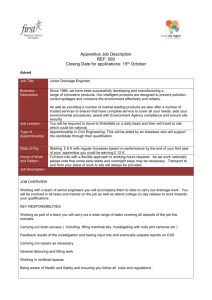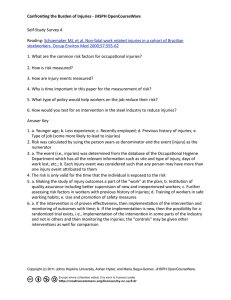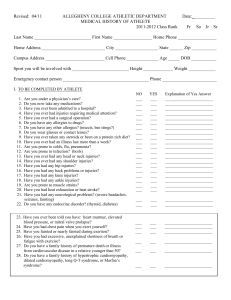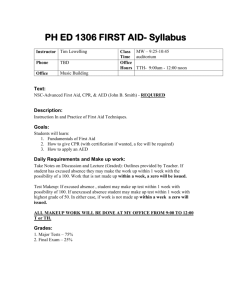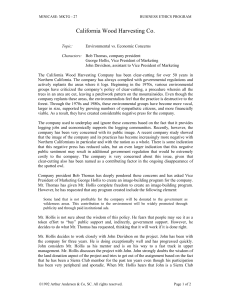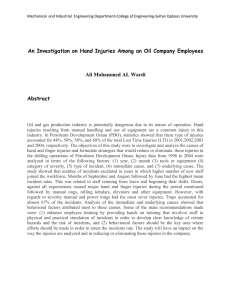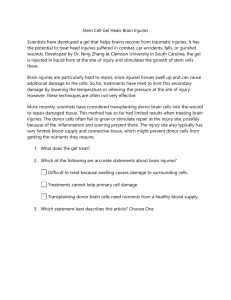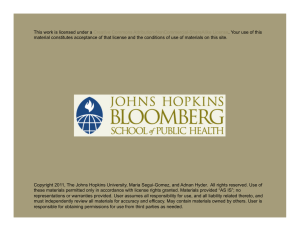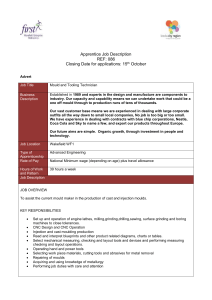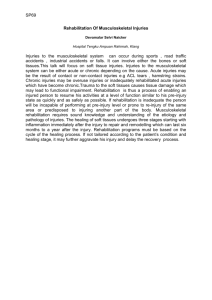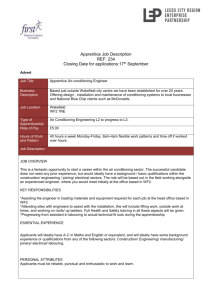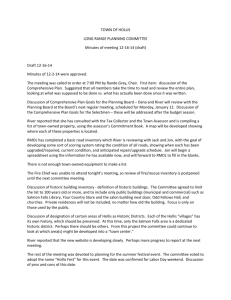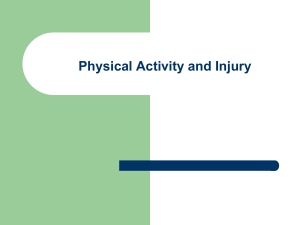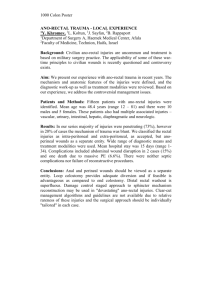Emergencies & Disasters - Winona R-III
advertisement
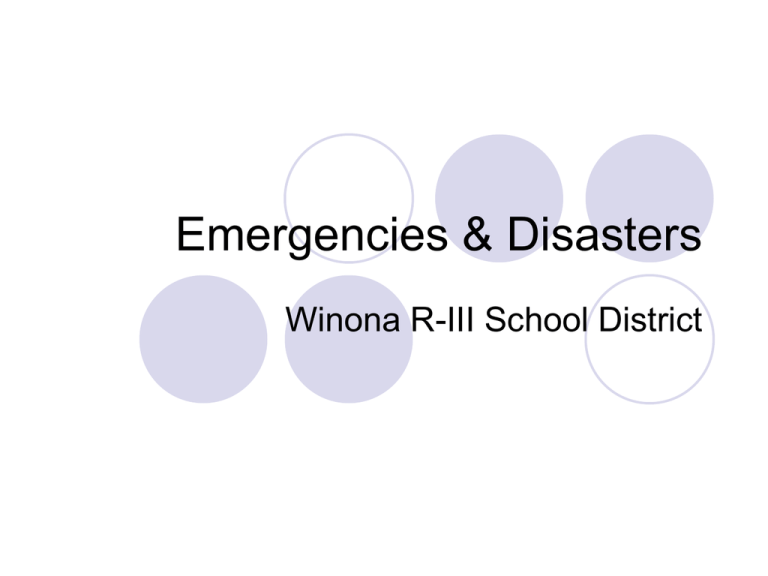
Emergencies & Disasters Winona R-III School District Types of Disasters Natural-Tornado/Earthquake-The probability for an earthquake of magnitude 6.0 or greater is significant in the near future, with a 50% chance by the year 2000 and a 90% chance by the year 2040. http://www.eas.slu.edu/Earthquake_Center/SEISMICITY/ NewMadridGeneral.html Technological- Fire/ Gas Explosion, etc. Health- Public Health Emergency or Illness Social- Terrorism/ School Violence/ Bomb Threat/ School Bus Accident/ Suicide or other Traumatic Death Faculty & Staff Be AWARE of the Crisis Manual/ Be familiar with the different procedures POST specific exits in your classroom REVIEW with students protocol for different emergency situations Specific routes till be discussed at a spring meeting Things we may not think of… Perimeter control & access Who-when-where to contain and control release of students Teacher ID badges Names/Phone #s Crime scene issues… Media coverage & communications School policy regarding who will speak to media/ Administrators ONLY Students will need to know… Adults are in control and will help keep them safe That it is ok to be feeling afraid WHAT TO SAY… Provide clear simple explanations for what happened and what will happen Acknowledge students feelings and help them label them Admit it you do not know the answers to the students questions What to DO: Safety & Security First! Keep each classroom grouped together in evacuation Keep students near familiar peers and adults Keep students grouped with their classroom rather that putting them into a larger group of students or letting them detach themselves from the classroom Shield students from seeing damage or severe injuries if possible WHS Crisis Plan Crisis center at each building will be the principal’s office Media briefing center will be the Superintendent’s conference area If the students are away from the building a central crisis center will be identified All communications will come through these offices and leaders All student releases will be made through assigned team leaders Crisis sequence: Emergency services should be summoned as necessary A designated team should direct the emergency responders to the location No one except the superintendent should speak to the media regarding the situation Students should be updated as to events Crisis Sequence: To ensure all students are accounted for, immediately take role and report missing students to the crises center/ Identify the missing students by raising your red flag Check students for injuries or signs of panic and report concerns asap Keep students together unless notified to release them Team members will be identified with bright orange vests 1. Preschool/ Kim Bland a. Linda Youngblood b. Bev Hollis 2. Elementary/ Sue Bockman a. Jennifer Vermillion, Nurse (If injuries are present- emergency center will be set up) b. Jennifer Asplin, Counselor c. Valerie Voyles d. Brian Simpson, Security e. Brenda Acord 3. Middle School/ John Eaton a. Sheila Plunk, Secretary b. Felina Wakefield c. Toby Tipton d. Lindy Hollis 4.. High School/ Donnie Wakefield a. Sandy Ipock, Secretary b. Deb Shockley, Counselor c. Brenda Roberts c. Tracy Crider e. Darrell Derryberry Any Teacher who is on planning time at the moment of an emergency should report to his/her principal for directions ASAP! Dismissing Students: Each teacher will have a clipboard (inside your emergency backpack) containing his or her students’ pertinent information. Students should only be released to parents or authorized personnel Students should be encouraged to not rush to leave school until released by the administration Teachers without students should quickly report to the administration to be assigned duties Phone center to be manned by secretary Emergency phone calls will be made from the crises centers/ do NOT allow students to use their own cell phones A record must be kept of ALL students being released…


